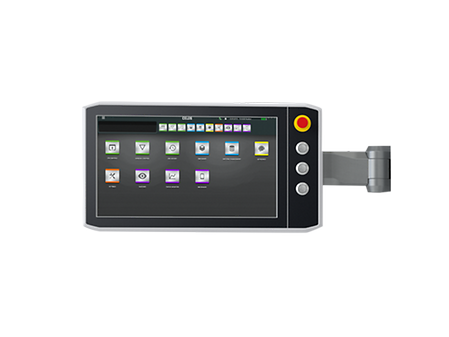


Selective Laser Melting in Powder Bed
LASERTEC SLM: Additive Manufacturing through powder bed fusion
- Up to 325 x 325 x 400 mm build volume
- Single-, Dual- or Quad-Laser
- rePLUG powder module for fast material change
- CELOS X: Consistent software solution
- Open system: Individual adjustment of all parameters
- CELOS: The App-based control and operating system
- Smart Key for different user settings
- 21.5" Touch Screen with CELOS
Metallic 3D printing at high precision
Selective Laser Melting (SLM) is based on the so-called powder-bedding process. In a build chamber the size of which varies depending on the machine, metal powder is deposited layer-by-layer onto a plate and melted in a highly localised fashion, based on a CAD model. With each layer, the plate holding the part is lowered, allowing it to gradually grow in height. Once the construction process is complete, the unmelted powder is suctioned off then prepared for reuse. Increasing adoption of the technology has already led to a wider range of materials becoming available, including various steels and aluminium, cobalt chrome and nickel alloys, as well as copper and titanium.
The size of the build chamber permitting, multiple workpieces can be produced simultaneously. This method of 3D printing becomes even more productive when multiple lasers are used simultaneously. The precision of powder bed machines depends on various factors, including the laser’s focal diameter, the material used, the layer thickness, and the structure of the component. A focal diameter of 80 µm can, for example with steels, achieve a web width of 0.15 mm. With aluminium, it is 0.3 mm. Selective laser melting can also achieve extremely fine structures, such as internal cooling channels in tools. Where even higher accuracy is required, specific areas of the component can be post-processed using conventional methods.
The right powder-bed machine for every application
DMG MORI’s range of powder-bed machines includes the LASERTEC 12 SLM, which boasts a build volume of 125 x 125 x 200 mm. It has a focal diameter of just 35 µm, allowing for the creation of extremely fine structures. The LASERTEC 30 DUAL SLM has a build volume of 300 x 300 x 350 mm and is equipped with two lasers. As a result, productivity increases by up to 80 percent. With both models, rePLUG makes material switchover fast and uncomplicated. The powder module makes zero-contamination changeover possible in under two hours.
Selective Laser Melting: a quick summary
How does selective laser melting work?
With selective laser melting, a component is built up in a powder bed. This means that powder is deposited onto a build plate, where a laser then melts the material based on a CAD model. This process is performed layer-by-layer, gradually building up a component over time.
What metal powders are available for the powder-bedding process?
Specialist manufacturers can produce a variety of metal alloys in powder form. Crucial to this process is ensuring that these metal powders have a homogeneous particle size. The size of each metal particle is microscopic, ranging from 15 to 45 µm.
What are the advantages of laser melting?
Selective laser melting is notable for the high degree of freedom regarding the geometry of workpieces and the high density of the material – around 99.9 percent.

